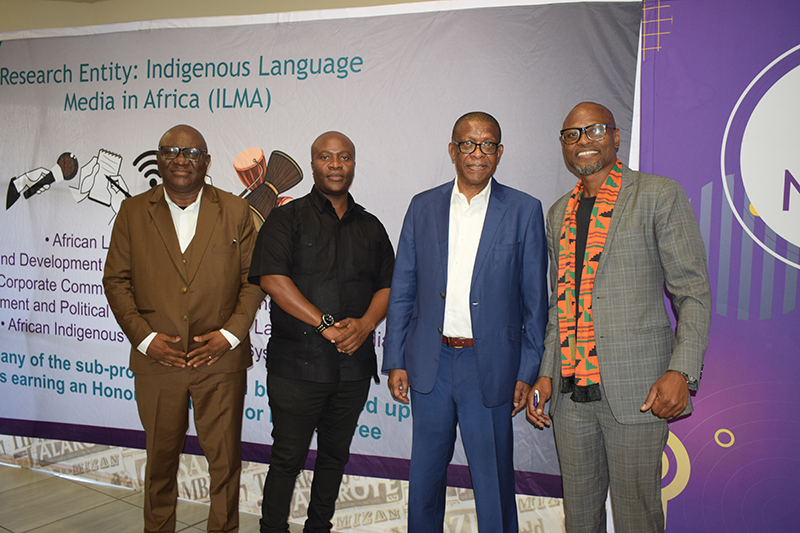By Phenyo Mokgothu and Gofaone Motsamai
Veteran broadcaster Tim Modise returned to Mahikeng, where his media career began, to deliver a public lecture on the evolving role of broadcast media in shaping South Africa’s cultural identity.
The lecture, held on 6 October at the North-West University’s (NWU’s) Mahikeng Campus, was hosted by the Indigenous Language Media in Africa (ILMA) research niche area in collaboration with the Tim Modise Foundation. It explored how radio and television have influenced cultural expression in the democratic era and what their future responsibilities should be.
“It is fitting that I speak here, where my journey started in 1982 as an on-air presenter at Radio Bop,” Tim said. “Broadcast media has always been more than a platform for information; it is a cultural force that shapes how we see ourselves and how we connect.”
He reflected on how radio served as both a cultural classroom and a unifying force for communities across language groups.
“Radio stations in the 1960s did more than broadcast, they shaped how we understood ourselves. They brought together Setswana speakers from across the diaspora, Bakgatla, Bahurutshe, Barolong, Bakwena, Batlhaping, and others, and used standard Setswana to teach us not only the richness of our language but also its capacity to describe new realities, from science to sport,” Tim said.
“They showed us that our languages could communicate ideas, emotions, and knowledge about every aspect of life.”
Remembering radio during apartheid
Tim reflected on how, during apartheid, radio became a space for political awareness and social dialogue. Programmes addressed health, labour and consumer issues, while music from artists such as Fela Kuti and Bob Marley linked audiences to broader African movements. “Music with identity and consciousness helped us see ourselves beyond narrow cultural lines.”
He cautioned that while the liberalisation of the airwaves after 1994 expanded media diversity, it also shifted priorities. “Most new stations broadcast in English and focus on commercial interests. Audiences are defined by spending power, not cultural identity,” he said. “This shift risks weakening the cultural fabric that binds communities.”
Tim called for stronger support for community radio and regional television stations. “If adequately funded, these platforms could educate residents, strengthen accountability in governance, and build informed communities,” he said. “Imagine what local media could achieve if municipalities allocated even a small percentage of their budgets to community programming. We could build informed citizens who understand their responsibilities and protect public infrastructure.”
He also discussed emerging challenges, including the rise of social media, misinformation and artificial intelligence. “The bigger question is whether our languages and cultural heritage can survive in this new digital landscape,” Tim said. “We must ensure that technology strengthens, rather than erases, our cultural identities.”
He concluded with a call to action. “The media does not just reflect society, it defines it. We must decide what kind of society we want to become.”
“Tim Modise’s lecture is more than a reflection on media history; it is a call to rethink how we use broadcasting as a tool for cultural continuity and democratic engagement,” said Prof Gilbert Motsaathebe, coordinator of the ILMA Journalism Sub-programme. “His insights challenge us, as educators and media practitioners, to ensure that our platforms preserve languages, shape identity and empower citizens to participate meaningfully in society.”

From left are Prof Abiodun Salawu, Prof Mpho Chaka, Tim Modise and Prof Gilbert.Motsaathebe.
